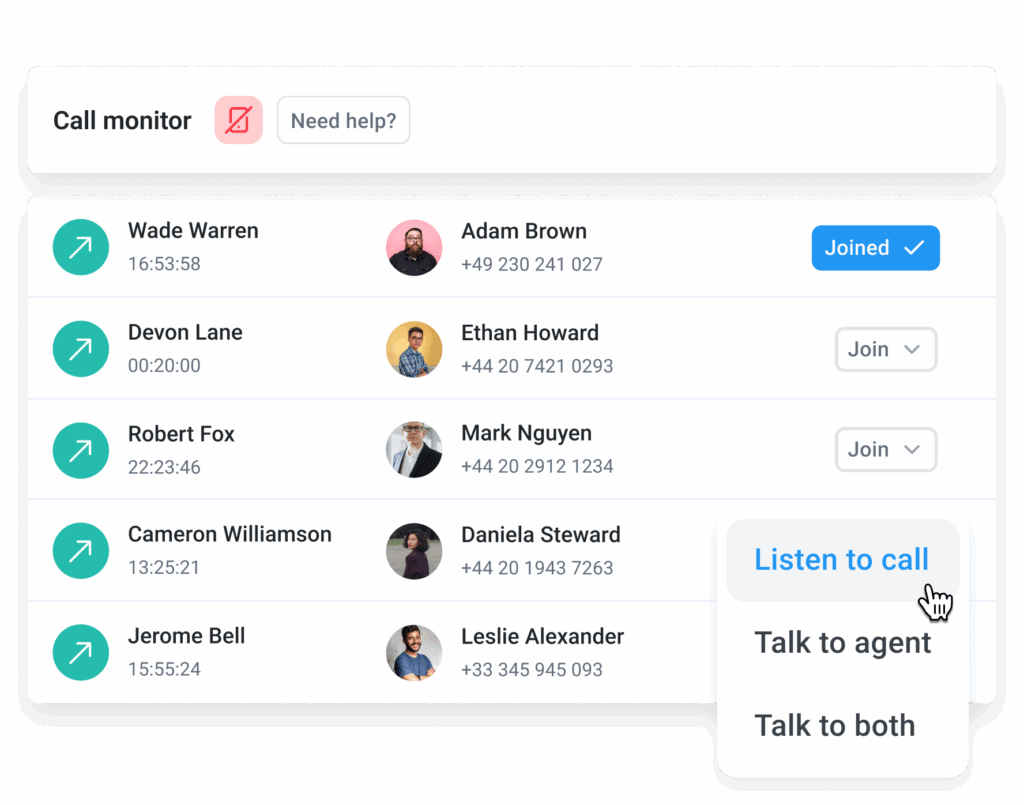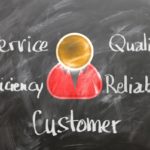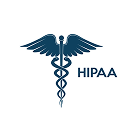11 Best Practices for Call Center Operations Management

94% of consumers say a positive service experience makes them more likely to buy again. Yet, only 13% feel that their issues are resolved easily¹. So what gives?
The answer may lie in call center management. When things behind the scenes are chaotic and systems are outdated, support teams are left reacting instead of responding. Customers get passed around, put on hold, or asked to explain their issue over and over. It’s frustrating—and it shows.
Now, here’s something to consider: more than half of consumers will switch to a competitor after just one bad experience². One. That means every interaction counts. And when call centers are poorly managed, businesses are taking a gamble with every single call.
The good news? A well-run, equipped call center can completely flip the script. With smart tools, clear workflows, and real-time insights, call center operations can resolve issues faster, deliver better experiences, and build real customer loyalty.
Key Takeaways:
- Operational efficiency begins with management. Well-structured call center operations management strategies directly affect team productivity, customer satisfaction, and ultimately, your bottom line.
- Focusing on meaningful KPIs, supporting agents with ongoing development, and using quality assurance to spot and solve real issues are core to running a high-performing call center.
- Every interaction is a chance to build loyalty or lose it. Well-managed call centers do more than solve problems—they strengthen relationships and contribute directly to business growth.
Run your call center like a well-oiled machine—start your free CloudTalk trial
What Are Call Center Operations?
Call center operations refer to everything involved in making customer support run properly. They include the people, processes, and tools used to handle customer interactions.
With that in mind, the main goal of call center operations management is to optimize the delivery and quality of customer service. Achieving this requires a strategic focus on several key areas:
- Effectively managing a call center team, including scheduling, training, and performance monitoring to ensure smooth operations.
- Leveraging the right technologies, such as call center software with features designed to enhance call center processes and customer experience.
- Monitoring and optimizing Key Performance Indicators (KPIs), like average response time, first-call resolution, and customer satisfaction scores.
- Integrating with other platforms, including CRMs and help desk systems, to provide agents with a complete, real-time view of each customer.
- Applying data-driven quality strategies based on call analysis and feedback loops to uphold service standards and continuously improve results.
11 Best Practices for Managing Call Center Operations
Running a call center isn’t just about answering phones and handling tickets—it’s about creating smooth, helpful, and even (dare we say?) enjoyable experiences for both your customers and your agents.
Whether you’re a seasoned call center manager or just getting started, these 11 best practices and call center improvement strategies will help you build a finely tuned, people-powered machine.
1. Monitor Metrics and Objectives (That Matter)
KPIs like “Average Handling Time” and “Calls Per Hour” sound nice on paper, but if your customers are still frustrated at the end of the call, what’s the point?
Effective contact center management starts with aligning your performance indicators with what truly matters to customers. Think First Call Resolution, Customer Satisfaction Score, and Net Promoter Score. These show you whether your team is actually helping, not just hustling.
A well-handled call that solves the customer’s issue is far more valuable than a rushed interaction that leads to repeat calls. Measuring what your customers care about will help call center managers spot what’s working and what’s getting in the way.
In short, when you know what your customers want and measure how well you’re delivering it.

2. Implement a Powerful Call Center Software
Even the best musicians need great instruments to perform at their best. And if you want your agents to sound professional and deliver excellent support, they also need a call center management system up to the task.
A powerful call center technology equips your agents to meet growing customer expectations and gives you the tools to gain visibility and control to manage everything happening behind the scenes.
Many of the best practices we’ll cover rely on how well you use your contact center operations software. Solutions like CloudTalk, for example, can help your team handle calls more efficiently, surface real-time customer data, and provide faster, more personalized support.
How? These features will improve your call center management experience:
- AI-Powered Dialers: Boost your outbound reach by 10x, skip unanswered calls with Answering Machine Detection, and let recruiters focus only on live conversations.
- Local Presence Dialing: Increase pickup rates by displaying a familiar local number, helping your agency feel more approachable and trustworthy in any market.
- Intelligent Call Routing: Automatically direct calls based on agent skills, availability, or caller history to connect customers faster.
- Call Flow Designer: Build custom call flows with drag-and-drop ease and use conditional logic to automate routine routing decisions.
- Ring Groups: Assign reps to shared call groups so incoming calls are picked up quickly by the next available team member.
Bottom line? Running a competitive call center today depends on leveraging features that can keep up with your team, your customers, and the pace of change.
Looking at options? Compare the top 20 call center solutions.
3. Invest in Agent Training and Development
Your agents are more than just voices on the other end of the line; they represent your business. Every interaction they have with a customer is your brand on display—for better or worse. That all depends on how prepared your team is.
And don’t be mistaken: training shouldn’t be limited to onboarding. Investing in continuous coaching and development is a never-ending process in call center management that keeps your agents up-to-date, and ready to tackle new challenges.
That doesn’t mean pulling agents off the floor for lengthy training sessions. In fact, some of the most effective development happens right in the flow of daily work. With solutions like CloudTalk, you can integrate training into your operations without skipping a beat.
Call Monitoring allows you to offer real-time guidance during live interactions, while Agent Reporting gives you clear insights into agents’ performance, so you know exactly where to focus your coaching.
Whether an agent needs support resolving issues faster, refining their tone, or learning a new process, you’ll have the data to provide the right guidance at the right time.

4. Optimize Workforce Management
You know those days when the phones are blowing up and everyone’s drowning? And other days when the team could do a full Netflix binge between calls?
Effective call center management software can help with forecasting and shift planning, offering insights into call volume trends and allowing you to allocate resources accordingly. These tools can predict peak hours, so you can schedule agents when they’re needed most and avoid the pitfalls of understaffing or overstaffing.
To have a broad idea, this handy online calculator helps to estimate the number of call center agents you need, depending on a variety of factors as outlined below:
Calculator Input
Description
Example Input
Number of calls per hour
The number of calls you receive every hour
e.g., 120
Average handling time
Average call duration, including wrap-up time in seconds
e.g., 300 (5 minutes)
Percentage of calls to be handled
The percentage of customers you would like served during your maximum wait time
e.g., 90%
Waiting time
The longest a caller can wait before reaching an agent
e.g., 60 seconds
5. Make Data-Driven Decisions
Trusting solely your gut is great—if you’re flipping a coin. But if you’re building a business? You need a solid, measurable process to know if you’re heading in the right direction.
Successful call center strategies are grounded in data—everything from call volumes and missed call rates to agent response times and sentiment trends. By analyzing these patterns, you can make decisions based on facts, not hunches.
The challenge lies in making all this information useful and easy to read. Using CloudTalk’s AI Analytics, you can turn this massive amount of data into ready-to-use insights and uncover trends in customer behavior.
Features like Sentiment Analysis and Topic Extraction help you understand how your customers feel and what the recurring topics are. That means you’re not just tracking numbers—you’re getting a real look into the customer experience.

6. Automate the Repetitive Tasks with AI
Not every customer support task needs a human touch. Things like password resets, account balance lookups, or confirming appointments can be handled faster—and even better—by automated systems.
With call center operations software like CloudTalk, you leverage AI features and Workflow Automation to manage routine tasks: logging calls, updating CRM records, tagging issues by category. It saves time, reduces mistakes, and gives agents a little breathing room to be more strategic.
Meanwhile, AI Voice Agents can also step in to handle first-call interactions and answer common questions, route callers to the right person, or gather basic info before a live agent even picks up. That lets your team focus on the calls where human help is actually needed.
Ultimately, automation is about letting people do less of the repetitive work and more of the work that requires thinking, empathy, and problem-solving.

7. Connect Your Tool Stack for Smarter Workflows
Disjointed tools mean your agents are multitasking between platforms, piecing together context from scattered sources instead of focusing on the person on the other end of the line.
Think about it: your agents are fielding questions, resolving issues, and juggling priorities in real time. If they’re also flipping between tabs to find a customer’s order history or manually updating records after every call, that’s not just inefficient—it’s exhausting.
When your contact center operations software plugs directly into your CRM or helpdesk, everything just…flows. Calls come in, and key customer data is already on-screen. After the call, updates sync automatically. No double entry. No time lost. No dropped details.
CloudTalk makes these integrations feel seamless, not stitched together. And once your systems are talking to each other, your team spends less time chasing info and more time doing what they do best.
8. Build a Culture of Open Communication and Feedback Loop
Many teams are great at talking to customers, but often overlook one of the most effective best practices in call center management: communicating clearly with each other.
If your team doesn’t feel heard, they’ll stop speaking up. And that’s a problem, because your agents are sitting on a goldmine of insights—they talk to customers all day!
Daily huddles, retrospectives, and even anonymous suggestion forms can surface insights you won’t get from reports alone. Use these moments to celebrate wins and normalize asking for help. A feedback-rich culture is a learning culture.
Also, be transparent with your team about performance metrics and company goals. When agents understand the “why” behind the process, they’re more likely to engage with it and contribute meaningfully to improving it.
9. Develop Comprehensive Standard Operating Procedures (SOPs)
Ever had two agents give different answers to the same question? That’s a sign you need better SOPs (Standard Operating Procedures).
SOPs are your team’s playbook. They spell out scripts and what to do in common situations so everyone’s consistent. But they shouldn’t be dusty PDFs no one reads—keep them simple, searchable, and easy to update.
Good SOPs don’t just dictate what to do; they explain why. Use flowcharts, decision trees, and real examples to make them more digestible. Host them in a central, searchable place so agents can access them during calls without fumbling.
Among the most effective call center strategies is keeping your SOPs current. Regularly audit and update your SOPs to reflect new policies, tools, or customer insights. Involve agents in the creation process—they’re the ones using them, after all.
10. Stay Updated on Regulatory Laws
We get it—compliance isn’t sexy. But it’s a must. Depending on where you operate, there are regulations around customer privacy and data management (think GDPR, HIPAA, TCPA).
Make sure your team understands the requirements and that your tools support compliance. CloudTalk, for instance, is built with data protection in mind from the ground up.
Beyond features like customizable call recording disclaimers and opt-ins, CloudTalk prioritizes security and privacy at every level. From encryption protocols to secure infrastructure, compliance is part of how the platform is designed to work.
Staying compliant is a key part of how to run a call center, and it’s the foundation for earning your customers’ trust.
Handling sensitive data in your call center? Make sure you’re meeting HIPAA standards.
11. Foster a Customer-Centric Culture
KPIs and tools matter, but culture is what ties it all together in contact center management. A customer-centric culture means every decision, from tech investments to hiring, is evaluated through the lens of customer impact. It’s not about being perfect—it’s about caring.
Reinforce this in onboarding, in your values, and in how you recognize success. Celebrate agents who go above and beyond, or who find creative ways to solve problems. Share customer testimonials and feedback in team meetings.
When your team feels connected to the people they’re helping, service naturally improves. Culture isn’t something you build once—it’s something you nurture every day.
What Are the Key Aspects of Call Center Operations
Running a call center is about orchestrating a fast-paced operation where every moving part plays a role in delivering great service.
While long-term strategy matters, a lot of what makes a call center effective happens in the day-to-day. Here are essential responsibilities that keep call center management on track and teams performing at their best.
Call Flow Management and Routing
Effective call flow management is the heartbeat of call center operations. It’s all about ensuring that customers and agents connect in the best way possible.
That interaction can take different forms, depending on the nature of the call. Inbound calls usually come from customers looking for quick answers or support, while outbound calls are often driven by sales, follow-ups, or feedback requests.
Each type has its own rhythm and demands, and managing both well requires more than just availability—it takes structure, timing, and the right features.
Quality Assurance
You can’t fix what you’re not watching. Quality assurance (QA) is what keeps service standards consistent. But it shouldn’t be limited to grading calls. Use it to spot patterns, flag gaps, and make informed decisions based on what’s really happening.
Are the agents sticking to scripts? Are they listening actively? Are customer issues being resolved the first time? These are the questions QA helps answer.
Daily call quality monitoring keeps you close to the customer experience, so you’re not relying on assumptions or waiting for complaints to find out something’s off.
Supporting Agents Continuously
Even the best hires need support. Training and development should be baked into daily operations, not treated as a “one-and-done” box to check. This keeps them engaged and minimizes agent churn.
Whether it’s a quick huddle to go over yesterday’s call trends, shadowing sessions with senior reps, or on-demand microlearning modules, consistent coaching keeps agents sharp. And it shows them you’re invested in their growth.
Call center managers who make time for feedback (both giving and asking for it) create a culture where learning is ongoing and improvement feels like a shared goal, not a top-down directive.
Analytics and Reporting
As we’ve mentioned before, call centers generate a lot of data—call durations, resolution times, hold times, satisfaction scores, and so on. But data only helps if you’re actually using it.
That’s where daily reporting and analytics come into play. Operations managers rely on Real-time Dashboards and Wallboards to track performance, identify roadblocks, and shift resources if needed.
If you want to know how to improve call center operations, you need to check your team’s metrics regularly. They look for signals, test small changes, and adapt fast. That’s the secret to staying agile while keeping standards high.
What Factors Affect Call Center Performance
Your call center can be a powerhouse for building customer loyalty, or a fast track to churn if things aren’t running right.
When performance drops, it directly impacts how customers see your brand. And let’s be honest: if the experience isn’t smooth, they won’t hesitate to take their business elsewhere.
So what’s really getting in the way?
- High turnover, low momentum: Constant staff changes disrupt team dynamics and keep your call center in training mode instead of peak performance.
- Chasing the wrong metrics: Focusing on vanity metrics over meaningful ones like customer satisfaction leads to misleading insights and poor decisions.
- Old tools that can’t keep up: Outdated software slows everything down, creates data gaps, and makes collaboration harder, holding your team back.
Is Your Call Center Ready to Step Up Its Game?
Managing a call center is about more than just keeping the phones ringing. It can be the difference between simply answering questions and actually building long-lasting relationships with your customers.
Companies that master call center performance management don’t just cut costs and boost productivity. They turn every interaction into an opportunity to delight, retain, and grow.
At the end of the day, a call center is supposed to be a growth engine. Businesses that put customer experience first see 80% more revenue growth and 60% higher profits than their competitors³.
If you’re aiming for those kinds of results, it’s time to talk to our team. Let us show you.
Grab a free demo with CloudTalk and see how we can help you go from answering calls to driving real results.
Sources
FAQs
What is the 80/20 rule in a call center?
It means answering 80% of calls within 20 seconds—an industry benchmark for balancing speed and service quality.
What are the 4 elements of a contact centre?
People, processes, technology, and performance metrics—all working together to deliver consistent and efficient customer support.
What is an OM in a call center?
OM stands for Operations Manager, the person responsible for overseeing day-to-day performance, staffing, and service quality.
Why do successful call center operations matter?
They improve customer experience, boost loyalty, reduce costs, and turn support into a driver of business growth.
What is people management in a call center?
What is the objective of call center management?
To deliver efficient, high-quality customer service while optimizing team performance, workflows, and operational costs.
What is call center quality management?
Call center quality management is the process of monitoring and improving service standards through call reviews, QA tools, and ongoing coaching.
























